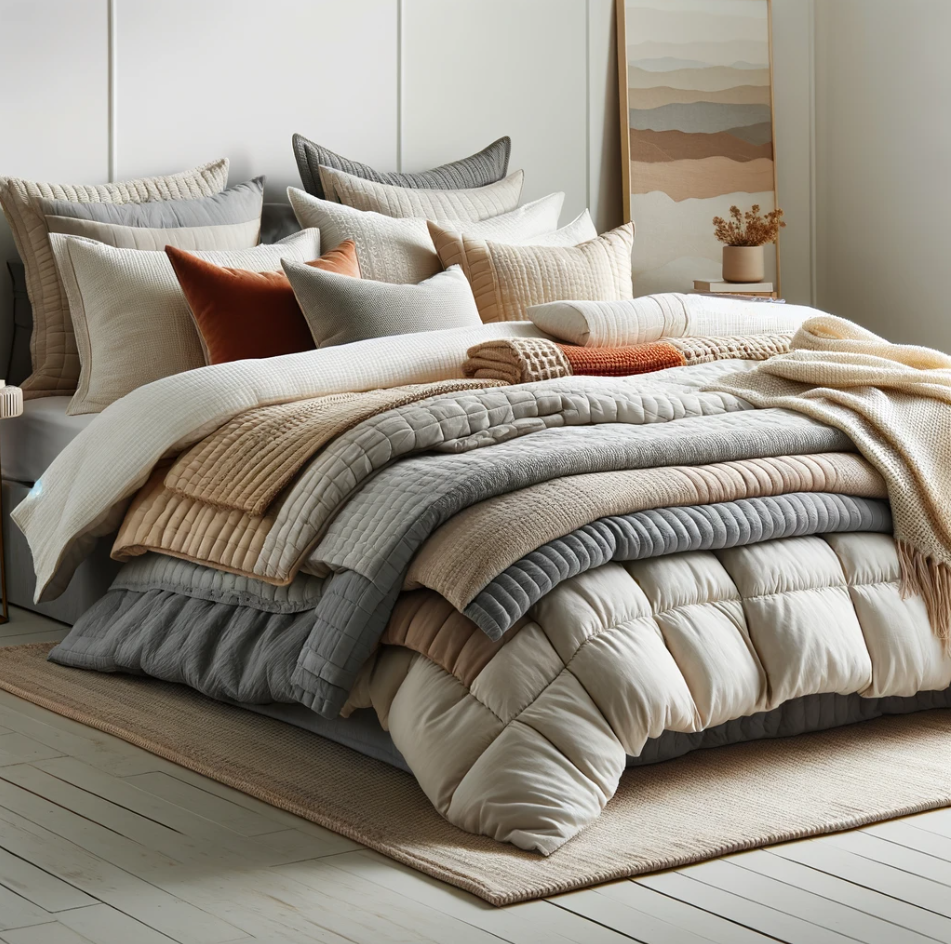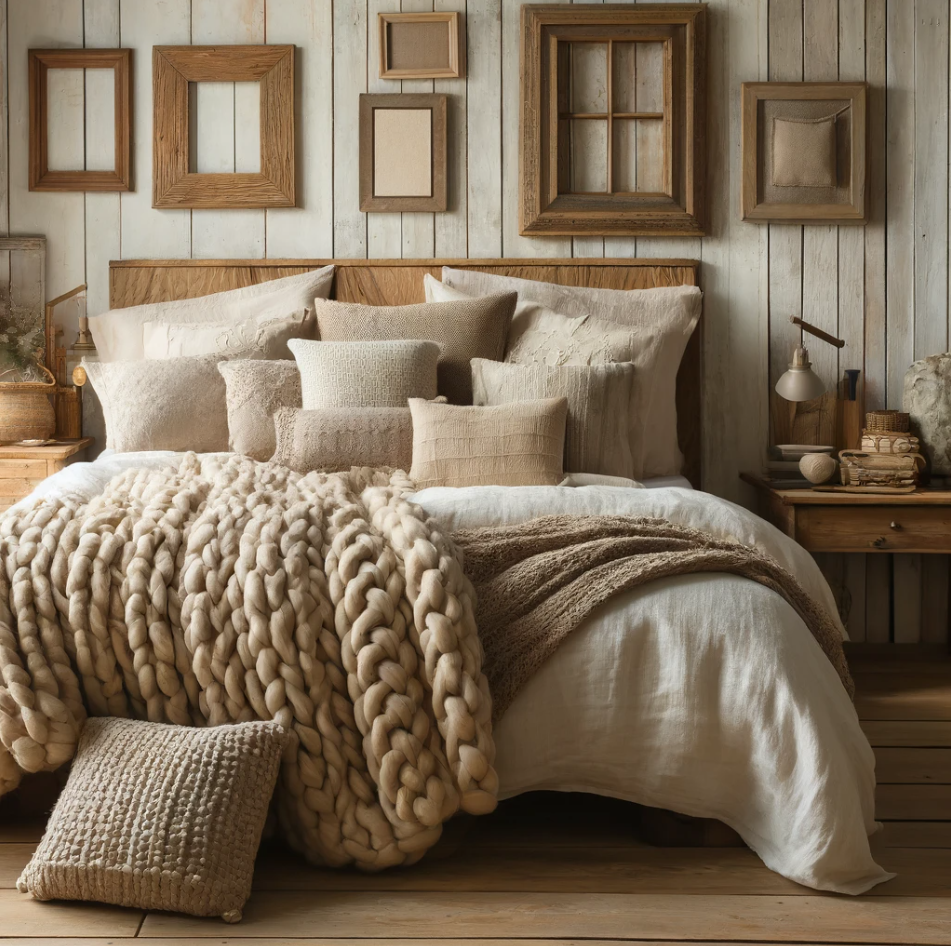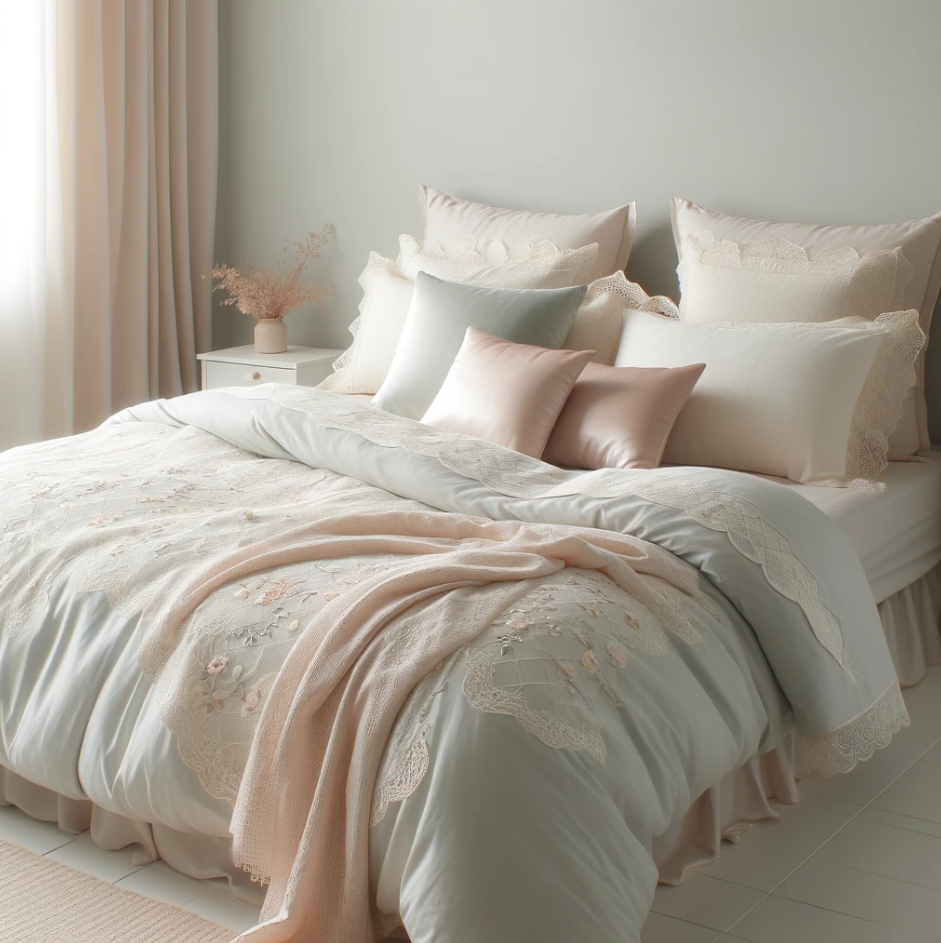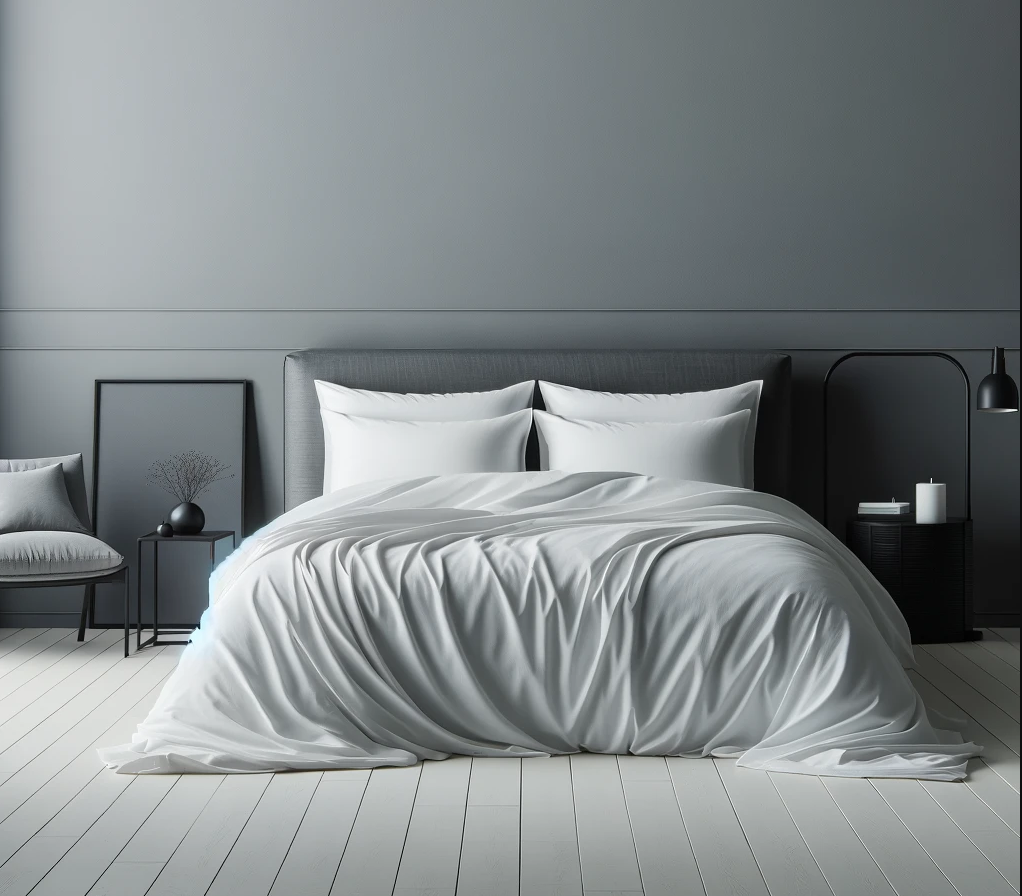What Is A Coverlet and How to Style It

A coverlet is a lightweight bed covering textile that combines the qualities of a blanket and a decorative bedspread. It is made to be less bulky than a quilt or comforter, providing a light layer of warmth while enhancing the bed's aesthetic appeal.
Traditionally, coverlets are made using a matelassé weaving technique - thick “stuffer” yarns are used to yield a texture or a pattern that reminds of quilted or padded textile, but without the bulk. This gives the coverlet a unique, elegant appearance, and this could be the reason why we love it so much.
Besides that, coverlets are generally versatile and suitable for different uses. In warmer climates or during summer months, a coverlet can replace heavier bedding like comforters or duvets, offering enough warmth without causing overheating.
This makes it ideal for those who sleep hot or live in humid environments.
They can also be draped over the bed as a top layer for a polished look or folded at the foot of the bed for added decoration.
Coverlets are typically made from materials like cotton, which is soft and breathable, making them comfortable to use directly against the skin.
Can I sleep under a coverlet?
Yes, sleeping under a coverlet is quite nice, actually! Coverlets are designed to be lightweight but still provide a layer of warmth. They can be used alone in warmer weather or layered with other bedding in cooler temperatures.
Since they are usually made from soft, breathable materials, we can say that they are made to be pretty but still provide a comfortable night's rest.
What’s the Difference Between a Coverlet and a Quilt?
Coverlet: A coverlet is primarily decorative and lightweight, so it’s not suitable as single cover for colder days. It is often used as a bed covering that doesn't cover the pillows or hang down to the floor. Can be woven or quilted.
Quilt: A quilt consists of three layers – a woven cloth top, a layer of batting, and a woven back, all stitched together. Quilts are heavier than coverlets and serve both as functional bedding for warmth and decorative pieces with elaborate patterns.
What’s the Difference Between a Coverlet and a Bedspread?
Coverlet: A coverlet is used for decoration or light coverage and generally does not extend to the floor; it is smaller and lighter than a bedspread.
Bedspread: Bedspreads are designed to cover the entire bed, including the mattress and pillows, often extending to the floor. They are used both for warmth and decor but are typically heavier and larger than coverlets.
What’s the Difference Between a Coverlet and a Comforter?
Coverlet: Light and primarily decorative, a coverlet is perfect for mild climates or as an additional layer for aesthetics.
Comforter: A comforter is thicker and designed to keep you warm. It is often filled with synthetic fiber or down and covers only the top of the bed without hanging extensively over the sides.
Want to know the difference between Quilt and Comforter? Click here!
What’s the Difference Between a Coverlet and a Duvet?
Coverlet: A coverlet is thin and often used on top of bed linens for decoration or slight additional warmth.
Duvet: Unlike a coverlet, a duvet is used to encase a down or synthetic fiber fill and is usually protected with a removable cover. Duvets are similar to comforters but are typically fluffier and are easy to maintain due to their covers.
What’s the Difference Between a Coverlet and a Blanket?
Coverlet: Typically used as a decorative layer over other bed linens, coverlets provide minimal warmth and are not designed for colder days.
Blanket: A blanket is a single layer of warm material, such as fleece or wool, used primarily for warmth during colder days. Blankets can be layered with other bedding to adjust to temperature needs.
Want to know if a quilt is the same as a duvet or doona cover? Click here!
10 ways to style a Coverlet
We created 10 ways explaining how to style a coverlet in your bedroom:
1. Layered Luxury: We just love the art of layering! Place the coverlet over a comforter or duvet for added texture and color contrast. Fold the top to expose the layers underneath. Use neutral tones with a pop of color for a balanced look.

2. Bohemian Rhapsody: Pair a brightly patterned or textured coverlet with eclectic throw pillows and a mix of blankets. Drape some fabric over the headboard to enhance the boho vibe.
3. Country Charm: Choose a quilted coverlet with floral or patchwork designs. Pair it with antique wooden furniture and classic patterns like gingham or plaids on pillows.
4. Coastal Retreat: Opt for a light, airy coverlet in shades of blue or turquoise. Pair it with white linens, seashell decor, and crisp, breezy curtains to create a beachy feel.
5. Rustic Farmhouse: Choose a linen coverlet in natural tones. Add textured pillows, a chunky knit throw, and rustic wood accents to complement the farmhouse aesthetic.

6. Winter Warmth: Use a thicker, woven coverlet in a deep color like burgundy or navy. Layer it with a plush velvet throw and richly colored pillows for a cozy winter bedroom.
7. Contemporary Edge: Select a coverlet with a bold geometric pattern. Keep other bedroom elements sleek and minimal to let the coverlet stand as the focal point.
8. Romantic and Feminine: A bedroom designed with a soft, pastel-colored coverlet featuring delicate details like lace or embroidery. The aesthetic is enhanced with silk or satin pillows, airy curtains, and subtle floral touches, creating a gentle and romantic atmosphere.

9. Eclectic Mix: Combine a simple coverlet with a variety of textured pillows, vintage throws, and unique art pieces. Mix and match colors and patterns for a personalized look.
10. Minimalist and Modern: Keep it simple by using a monochromatic color scheme. Drape your coverlet smoothly over the bed, allowing it to fall naturally on the sides without much fuss.

How to clean and maintain your coverlet?
- To properly wash and care for your coverlet, start by checking the manufacturer's care label for specific instructions.
- If machine washing is recommended, use a gentle cycle with cold water and a mild detergent free of bleach and harsh chemicals.
- For minor stains or spills, spot clean the affected area with a damp cloth and mild detergent, gently blotting the stain rather than rubbing it to avoid spreading.
- Avoid overloading the machine - wash the coverlet alone.
- When it comes to drying, the best method is air drying because cotton tends to shrink in dryers. Our recommendation is to lay the coverlet on a clean, dry surface or hang it on a clothesline, avoiding direct sunlight to prevent fading.
- If you need to use a dryer, select a low heat setting with the “iron it” option to avoid wrinkles.
- Pro advice: Adding dryer balls can help keep it fluffy.
- For daily maintenance: shake out your coverlet to remove dust and debris, which helps maintain its freshness.
- When storing your coverlet, choose a cool, dry place. Avoid airtight containers and instead use breathable storage bags to prevent moisture buildup and mildew.
- Following these steps will keep your coverlet clean, fresh, and in good condition for years to come!
